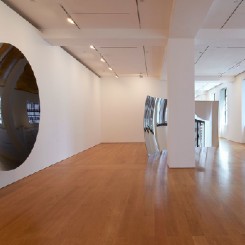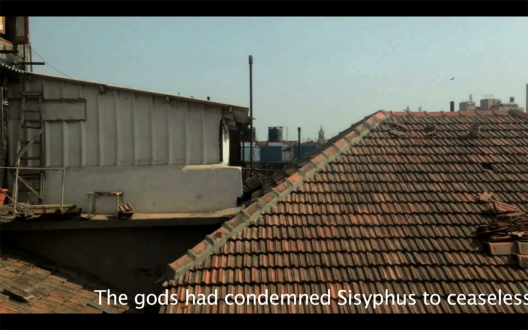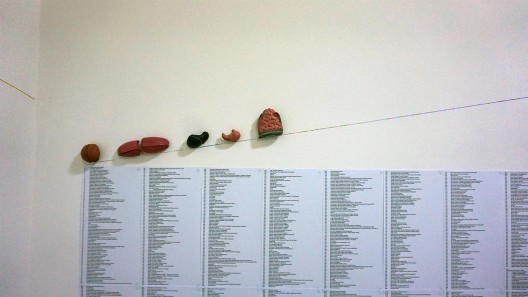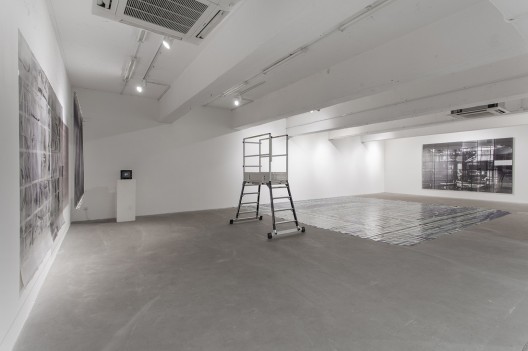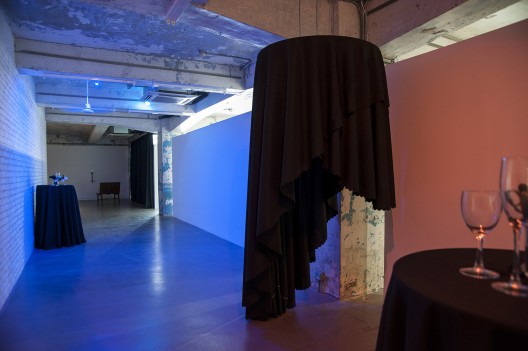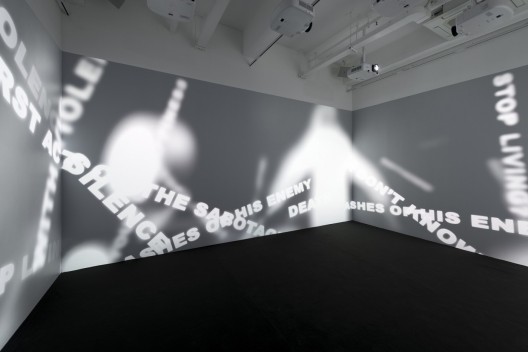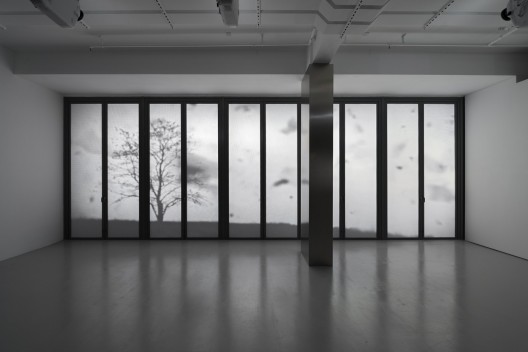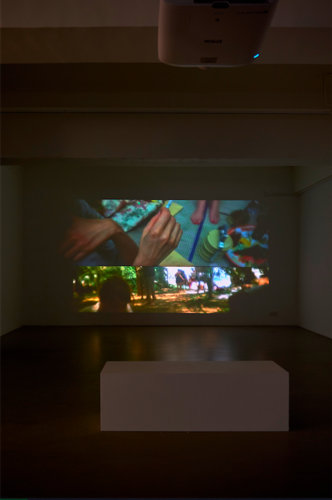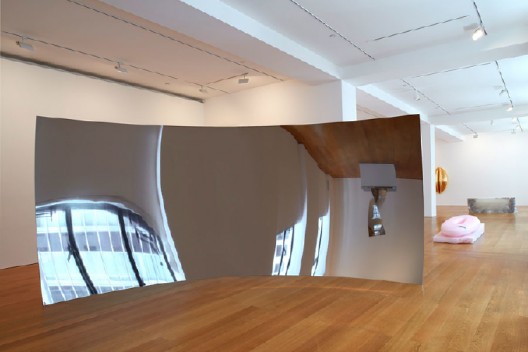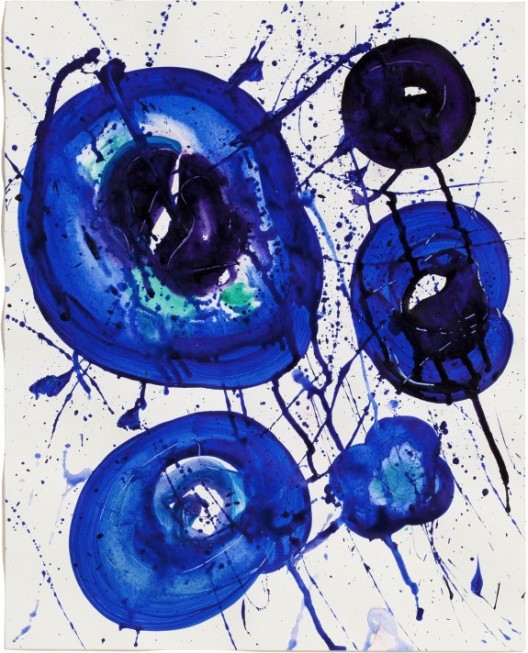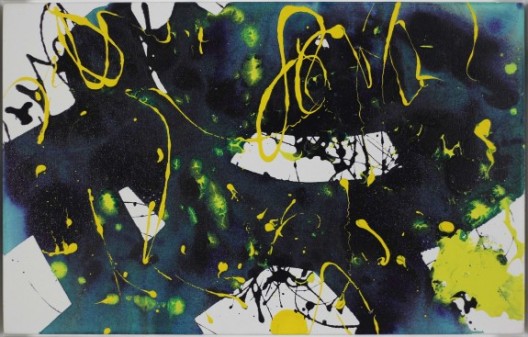Things that can happen (1/F, 98 Apliu Street, Sham Shui Po, Kowloon), until October 30, 2016
Yogesh Bavre’s interest in consumption, racism and the fluidity—or lack thereof—of borders lead him to create works that question the self and how it is repeatedly being destabilized in a capitalist society. The Mumbai artist’s latest solo hones in on situations such as a violent encounter between an ethnic minority protestor and Hong Kong police, and the time when the artist’s travelling companion was detained by Hong Kong airport authorities. One video features the artist reciting a passage from Albert Camus’s The Myth of Sisyphus while the camera pans to a group of construction workers outside a lecture hall in Mumbai. Obvious references are made to Sham Shui Po, where the gallery is located: a deconstructed iPhone, its parts laid out in meticulous fashion on the gallery floor, is a ready reminder of the hodgepodge of electronics stalls that line the neighborhood’s street markets, while an exhausting list of illnesses references the high percentage of mental health patients in the area.
“For now we see through a window, dimly”
Gallery EXIT (3/F, 25 Hing Wo Street, Tin Wan, Aberdeen, Hong Kong), until November 5
Featuring photographs taken over almost twenty years from 1998 to 2006, Luke Ching’s latest solo exhibition expounds on the idea that the camera obscura allows us to gain insight into the human condition. Having transformed various abodes around the city into make-shift pinhole cameras, the artist records seemingly banal yet telling moments of urban life, including in Hong Kong island’s last squatter village in Pok Fu Lam. Photographic negative prints are placed next to their positive counterparts to drive home the idea that beneath the superficial layer of reality lie many more layers, while the grid aesthetic provides a stark commentary on fragmentation in contemporary life. Wistful and ironic, these photographs depart from the artist’s performance art pieces which often have a more activist bent, but they are nonetheless equally powerful in their quiet steeliness.
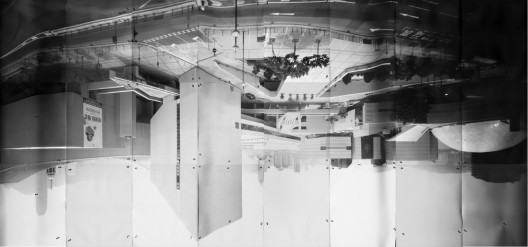
Luke Ching, “41 Salisbury Road, Tsimshatsui, Kowloon (positive)”, archival print, 152.4 x 325.1 cm, 2004
Blindspot Gallery (15/F, Po Chai Industrial Building, 28 Wong Chuk Hang Road), until November 19, 2016
Trevor Yeung’s art has always been hugely intimate, and while the artist’s latest solo is no less personal in its musings on the ideal romantic relationship, it is also accessible and relevant in its critique of the ways nostalgia is being consumed, and the implications this has for society. Among the assortment of installations is “Sunset Light,” where viewers are invited to light a lone candle that casts an orangish-purple glow on the wall, and “Last Summer Set”, a palm tree-shaped candle stand submerged in a monstrous body of congealed wax. In one corner of the gallery, specimens of the fugu fish take the form of cacti, reflecting, perhaps, on man’s willingness to be deceived. An exception to the undercurrent of cynicism is “Pineapple Sea”, an installation that examines the water-retaining capacity of bromeliad, and the interdependent relationship between this tropical plant and small insects.
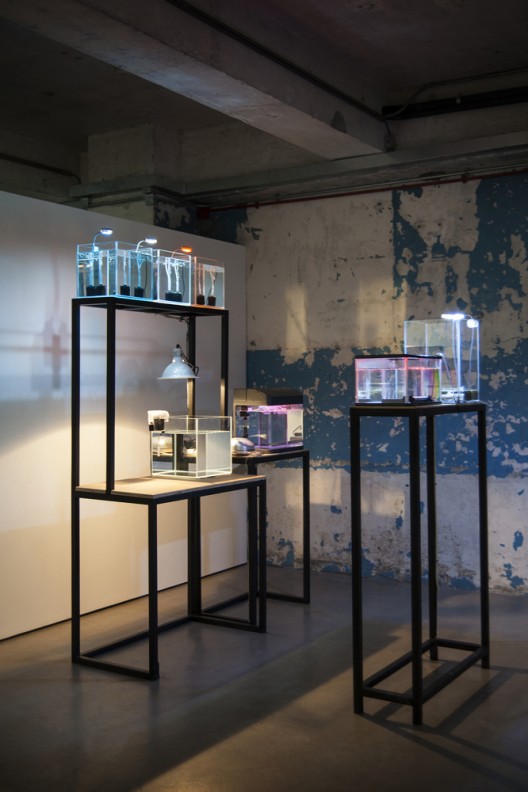
Trevor Yeung, “Music Box (bedroom)”, fish tank, steel structure and aquarium equipment, dimensions variable, 2016
M+ Pavilion (West Kowloon Cultural District), until November 6, 2016
Those who had the chance to visit Tsang Kin-wah’s “Infinite Nothing” during the 2015 Venice Biennale can safely assume that the artist’s latest show at M+ is equally bleak, if not more so. Entitled “Nothing”, the show, in typical Tsang fashion, draws upon a deep pool of references, including Stanley Kubrick’s A Clockwork Orange (1971), Béla Tarr’s The Turin Horse (2011) and the ominous verse from Shakespeare’s Macbeth, “Life’s but a walking shadow . . . a tale told by an idiot, full of sound and fury, signifying nothing.” A projector casts onto the floor a blurred image of a donkey carrying a heavy load. A metaphor for man’s tendency towards servitude, this seems particularly apt for a city where nine-to-five work hours are the anomaly, rather than the norm.
“Apichatpong Weerasethakul: The Serenity of Madness”
Para Site (22/F, Wing Wah Industrial Building, 677 King’s Road, Quarry Bay), until November 27, 2016
Travelling from Chiang Mai’s MAIIAM Art Museum, Apichatpong Weerasethakul’s first Hong Kong solo continues the Thai filmmaker-artist’s preoccupation with memory, dreams, transformation, and sexuality. “Sakda (Rousseau)” ruminates on memory—or the potential loss of it—while “Fireworks (Archives)” interweaves the past and present, fantasy and memory to question official narratives. Don’t miss “Ghost Teen”, a giant photograph of a teenager donning a ghost mask that is plastered on the exterior of the building. Viewers can catch a glimpse of its reflection on the glossy surface of the neighboring building from the Para Site office. Admittedly, Weerasethakul’s feature-length films do better service to his strength as a story-teller, but the artist’s unique brand of aesthetics still shines through in this exhibition.
Gagosian Gallery (7/F, Pedder Building, 12 Pedder Street Central), until November 5, 2016
Anish Kapoor’s first Hong Kong solo delves into scale, color, voids and materiality. Highlights include “Vertigo” (2006), a concave/convex stainless steel sculpture that mocks the selfie era, and “Stone Saddle” (2016), whose hollowed-out structure reflects the artist’s investigation of emptiness.
“Color in Space: Sam Francis 1923–1994”
Pearl Lam Galleries (6/F, Pedder Building, 12 Pedder Street, Central), until October 31
Sam Francis’s Blue Ball paintings are about scale and the void. While he was associated with the American Abstract Expressionists, arguably the best works by Francis (who died in 1994) are those that combine expressive use of colors with direct autobiographical context. His famous Blue Ball paintings (made while Francis was recovering from renal tuberculosis between 1960 and 1963, which may account for the title of the series) demand that as much attention be paid to the space between them as to the brilliant blobs of color; but it is “is To Mako” (Mako Idemitsu was Francis’ third wife), a stark composition where sensuous strokes of red, yellow, green, and blue are forced to the edge of the frame, leaving behind an alluring whiteness that really pulls you in.

